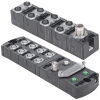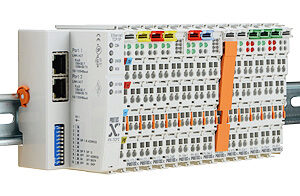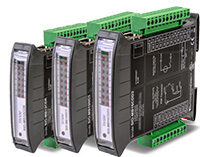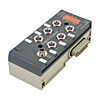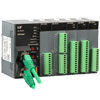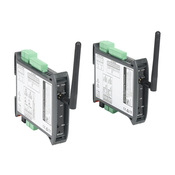 Cookies are not enabled on your browser.
Cookies are not enabled on your browser.Cookies are required for our site. Please enable cookies in your browser preferences to continue.
We will close at 3PM ET on Tuesday, December 23rd. Please note our shipping changes for Tuesday.
Freight shipments, FedEx ground and customer pickup deadline is 11:00AM ET. FedEx Priority (and free 2-day delivery) cutoff will be 1:00 PM ET. No UPS shipping will be available on Tuesday.
Drop ship vendors, Saginaw, Husky and Weigmann will also be closed Friday, Dec 26th.
Merry Christmas to each of you and your families from the employees of AutomationDirect
- Barcode / RFID / Vision
- Bulk Wire & Cable
- Cables (Terminated)
- Circuit Protection / Fuses / Disconnects
- Communications
- Drives & Soft Starters
- Enclosure Thermal Management & Lights
- Enclosures & Racks
- Field I/O
- HMI (Human Machine Interface)
- Hydraulic Components
- Motion Control
- Motor Controls
- Motors
- Pneumatic Components
- Power Products (Electrical)
- Power Transmission (Mechanical)
- Process Control & Measurement
- Programmable Controllers
- Pushbuttons / Switches / Indicators
- Relays / Timers
- Safety
- Sensors / Encoders
- Stacklights
- Structural Frames / Rails
- Tools & Test Equipment
- Valves
- Water (Potable) Components
- Wire & Cable Management
- Wire & Cable Termination
- Retired Products
Configuration Utilities
- PLC Family Selector
- P1000 PLC Systems
- P2000 PLC Systems
- P3000 PLC Systems
- ProductivityCODESYS
- CLICK PLC Systems
- Do-more® BRX PLC Systems
- LS-Electric® XGB PLC Systems
- Productivity®Open Systems
- Datalogic® Safety Light Curtains
- LS-Electric® Servo Systems
- Nitra® Pneumatic Grippers
- Object Detection (Sensors)
- PAL Controller Configurator
- Precision Gearbox Selector
- Protos X® Field I/O
- Pyrometers Selector
- Quadritalia® Modular Enclosures
- Stellar® Soft Starters
- Stepper System Selector
- SureFrame T-slot Extrusion
- SureMotion® XYZ Gantry
- SureServo2® System Selector
- SureStep® Linear Actuators
- Timing Belts & Pulleys
- Werma® Stacklights
- ZIPLinks
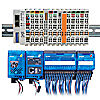
Field I/O (or distributed I/O) can greatly improve system efficiency and reduce wiring costs where end devices are located at a distance, which result in easier installations and faster troubleshooting.

This page will refresh momentarily.
Warning
Some of the selected facets have been selected by the {{ assistanceData.title }} Help.
Resetting/clearing ALL facets will end {{ assistanceData.title }} Help.
![Help icon]() Selection Assistance - {{ assistanceData.title }}
Selection Assistance - {{ assistanceData.title }}
Stride Interactive Product Tour Request
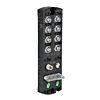
IO-Link
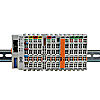
Protos X I/O
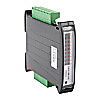
Stride I/O
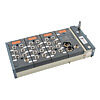
NITRA PAL I/O
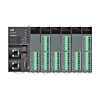
LS Electric XGB
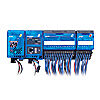
Terminator I/O
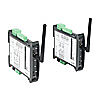
Point to Point Wireless I/O
Field I/O
Field I/O systems are available in a variety of form factors and protocol compatibility, most typically Modbus (RTU or TCP) and EtherNet/IP. IO-Link is a newer and very popular field I/O system that incorporates extended diagnostic information from IO-Link compatible sensors/actuators with standard I/O signals. Extremely fast and reliable EtherCAT communication is also supported by select LS Electric XGB bus couplers and the Murrelektronik Premium EtherCAT IO-Link master module.
For part listing and specifications, go to Shop Now
IO-Link
Newest Additions!
- Endress+Hauser IO-Link Temperature Transmitters
IO-Link allows field I/O devices to connect to an IO-Link master module, which creates a more effective field I/O system that provides real-time process values and control signals, while adding the functionality of collecting data such as condition, parameters, and performance from intelligent field devices.
- IO-Link masters handle field I/O signals (e.g., temperature, pressure, etc.) and diagnostic data such as sensor/actuator errors and health of connected IO-Link devices
- IO-Link masters have a built-in web server to view device status, configurations, and diagnostics
- IO-Link masters with screen interface allow IP, subnet mask, and gateway configurations
- IO-Link master options convert IO-Link signals to/from EtherCAT, EtherNet/IP, OPC-UA, and/or MQTT
- IO-Link hubs available to connect discrete digital and analog sensors/actuators to an IO-Link master
- Other IO-Link capable devices include sensors, pushbutton switches, signaling devices/towers, identification products, and communication modules
Protos X I/O
The Protos X compact, modular field I/O system allows a user to monitor and control remote field I/O devices without having to invest in another controller. The easy-to-install design saves time and excess field wiring and speeds up troubleshooting.
- The ultra-compact design makes it perfect for applications where a typical PLC or I/O solution simply would not fit
- Unique interlocking design of the terminals means the data and power buses are carried from module to module and used only when needed
- Four bus coupler models support Modbus RTU, Modbus TCP and EtherNet/IP protocols
Stride I/O
The Stride Field I/O family of modules provides a simple and economical means to connect inputs and outputs to a Modbus TCP communications network. Each module operates as a standalone Modbus TCP server, and can be configured via a built-in web server.
- Interfaces remote I/O points to a Modbus TCP network via Ethernet 10/100 Base-T
- Digital inputs, discrete relay and transistor outputs
- Analog current, voltage, resistance and temperature inputs; analog current and voltage outputs
NITRA PAL I/O
The NITRA Pneumatic Automation Link (PAL) system is an electro-pneumatic system as well as a field I/O system that can include electrical I/O or pneumatic valves or both. A system can be controlled either by an EtherNet/IP master or direct wiring (for configurations with exclusively pneumatic valves).
- Supports up to 16 discrete input and 16 discrete output modules per system, plus 4 analog output, and 4 analog temperature
- IP65 rated, machine mountable system decreases design and installation time
- Quick-disconnect electrical and push-to-connect pneumatic connections keep installation clean and simple
- Local expansion allows for several subsystems controlled from one EtherNet/IP node
LS Electric XGB
LS Electric has been in the PLC and I/O business for decades and is well known for reliable control solutions. Their bus coupler and I/O options are an excellent choice for most field I/O needs.
Depending on the model chosen, these bus couplers can communicate with any EtherNet/IP, Modbus TCP or EtherCAT master and allows I/O connections to be installed near the system being controlled. Save time and money by using remote I/O bus couplers and one single Ethernet cable run from the master device instead of multiple wire runs for each I/O point.
One bus coupler can support up to 8 LS XGB PLC I/O modules including high-density 32-point discrete modules. The module features two 100/1000 Mbps RJ45 Ethernet ports for extremely fast real-time communication.
Terminator I/O
Terminator Field I/O combines I/O points with their field terminations into a modular package to save panel space and money. With Terminator I/O, you can use distributed I/O nodes close to field devices for faster and more efficient wiring and troubleshooting.
- Network interface modules support Ethernet, DeviceNET, MODBUS remote I/O; some adapters include an on-board RS232 serial port
- Discrete and analog industrial I/O modules with modular terminal bases
- Configuration flexibility by plugging together a network interface module with up to 16 I/O modules
- For high power systems, combine multiple power supplies on a single I/O set
Point to Point Wireless I/O
New!
Point-to-point wireless I/O is ideal for industrial settings where wiring is impractical, such as long distances, physical obstacles, or moving equipment. It creates a dedicated, bidirectional radio link between a pre-paired set, enabling reliable transmission of analog or digital signals with easy deployment.
Check out our job openings
Free Online PLC Training
FREE Video Tutorials
FREE e-Newsletter
Automation Notebook
Product Literature
White Papers
News, Product and Training Bulletins
E-Books
 Safe &
Secure
Safe &
Secure

We accept VISA, MasterCard, Discover, American Express, PayPal or company purchase orders.
Voted #1 mid-sized employer in Atlanta
Check out our
job openings

